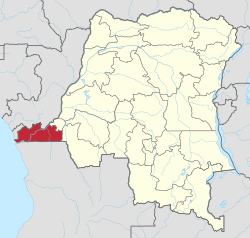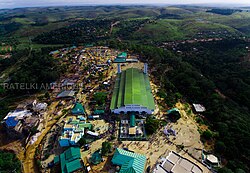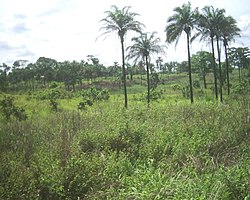Kongo Central | |
|---|---|
 | |
| Coordinates: 05°49′S13°29′E / 5.817°S 13.483°E | |
| Country | |
| Capital and largest city | Matadi |
| Government | |
| • Body | Provincial Assembly of Kongo Central |
| • Governor | Grâce Bilolo [1] |
| Area | |
• Total | 53,920 km2 (20,820 sq mi) |
| Population (2024) | |
• Total | 6,923,500 |
| • Density | 128.4/km2 (332.6/sq mi) |
| Ethnic groups | |
| • Native: | BaKongo |
| Time zone | UTC+1 (West Africa Time) |
| ISO 3166 code | CD-BC |
| License Plate Code | |
| Official language | French |
| National languages | Kikongo ya Leta, lingala [2] |
| HDI (2017) | 0.432 [3] low |
| Non-national language | Kikongo |
Kongo Central (Kongo : Kongo dia Kati [4] [5] ), formerly Bas-Congo, is one of the 26 provinces of the Democratic Republic of the Congo. [6] Its capital is Matadi.




